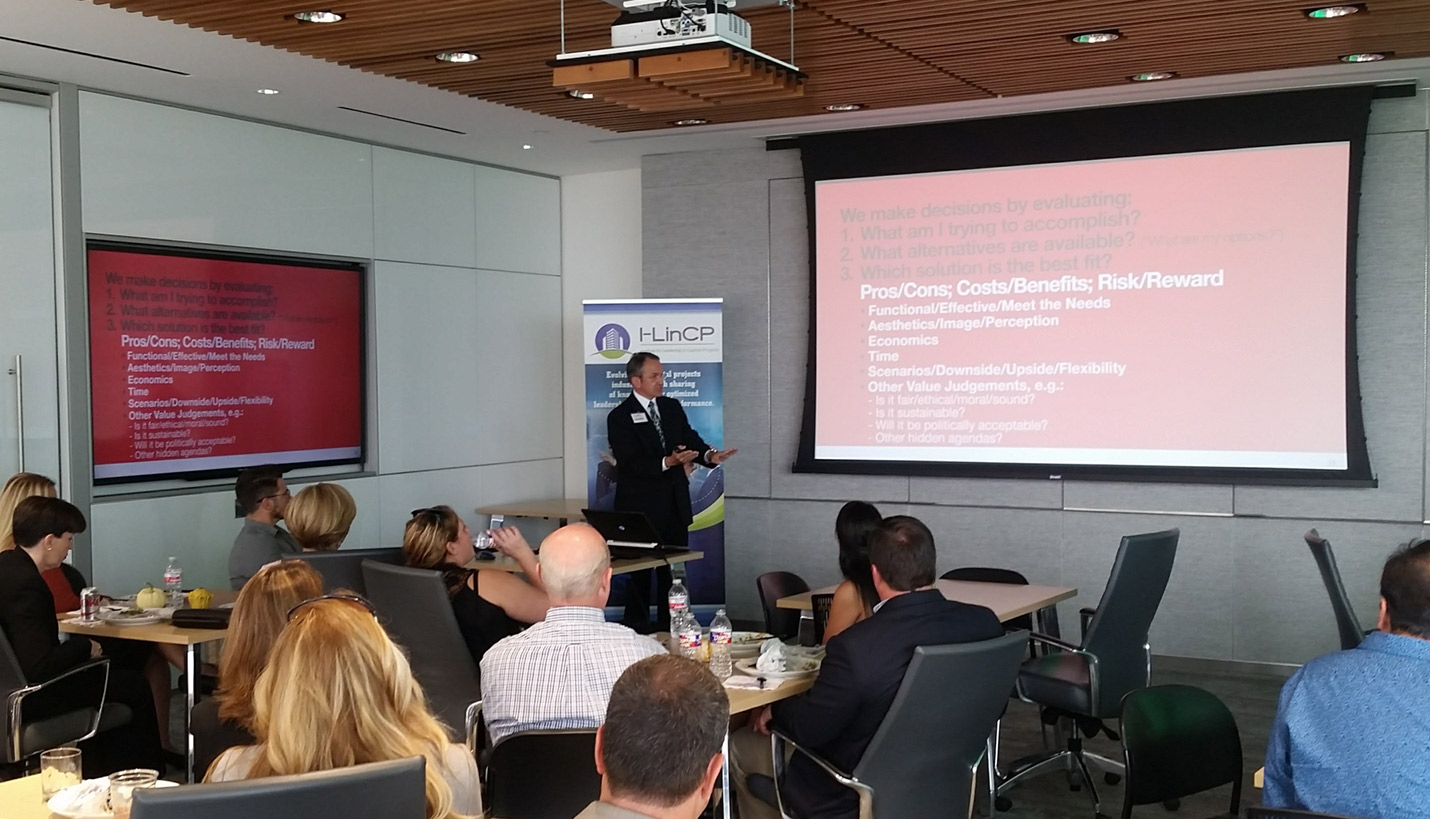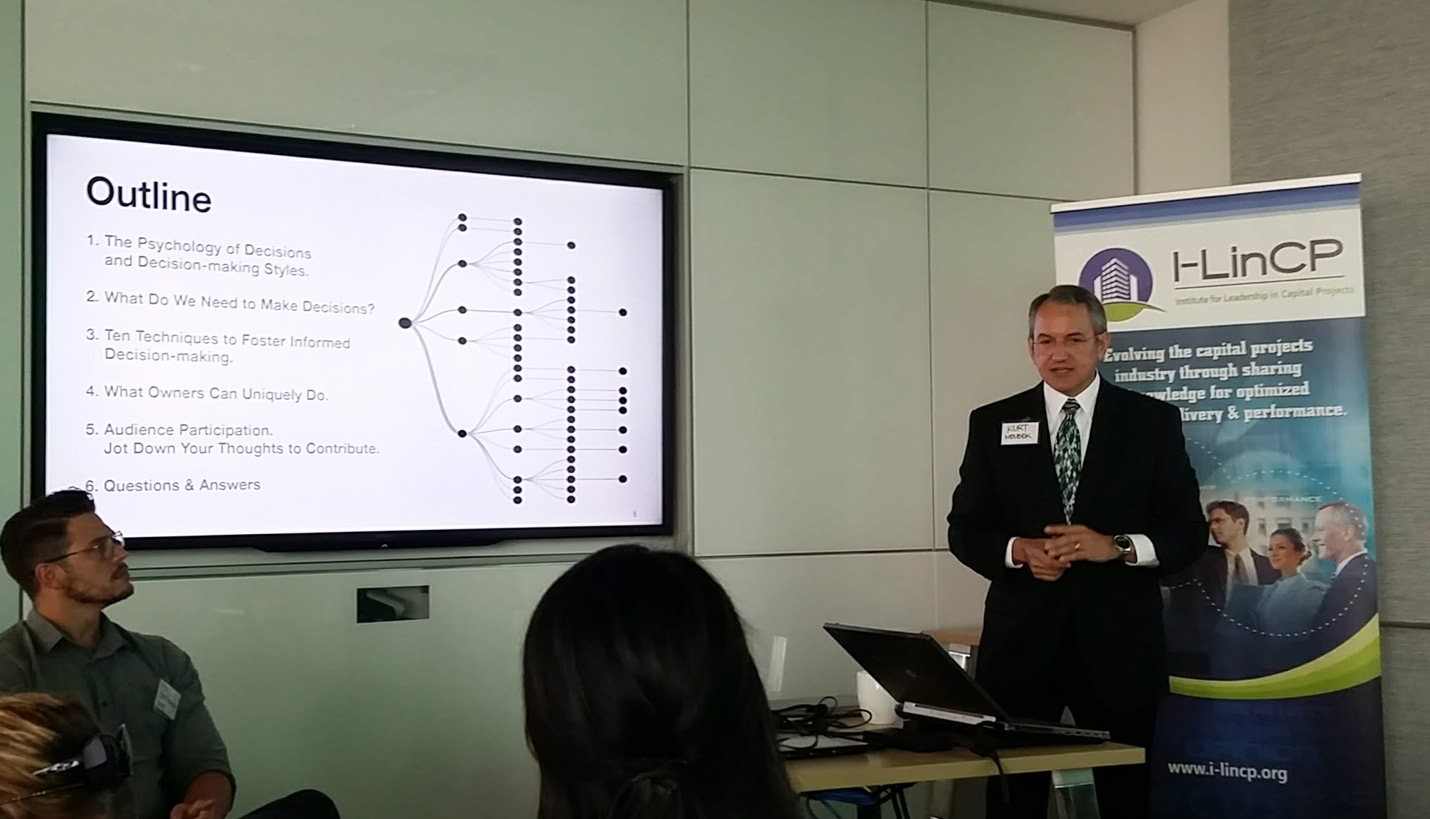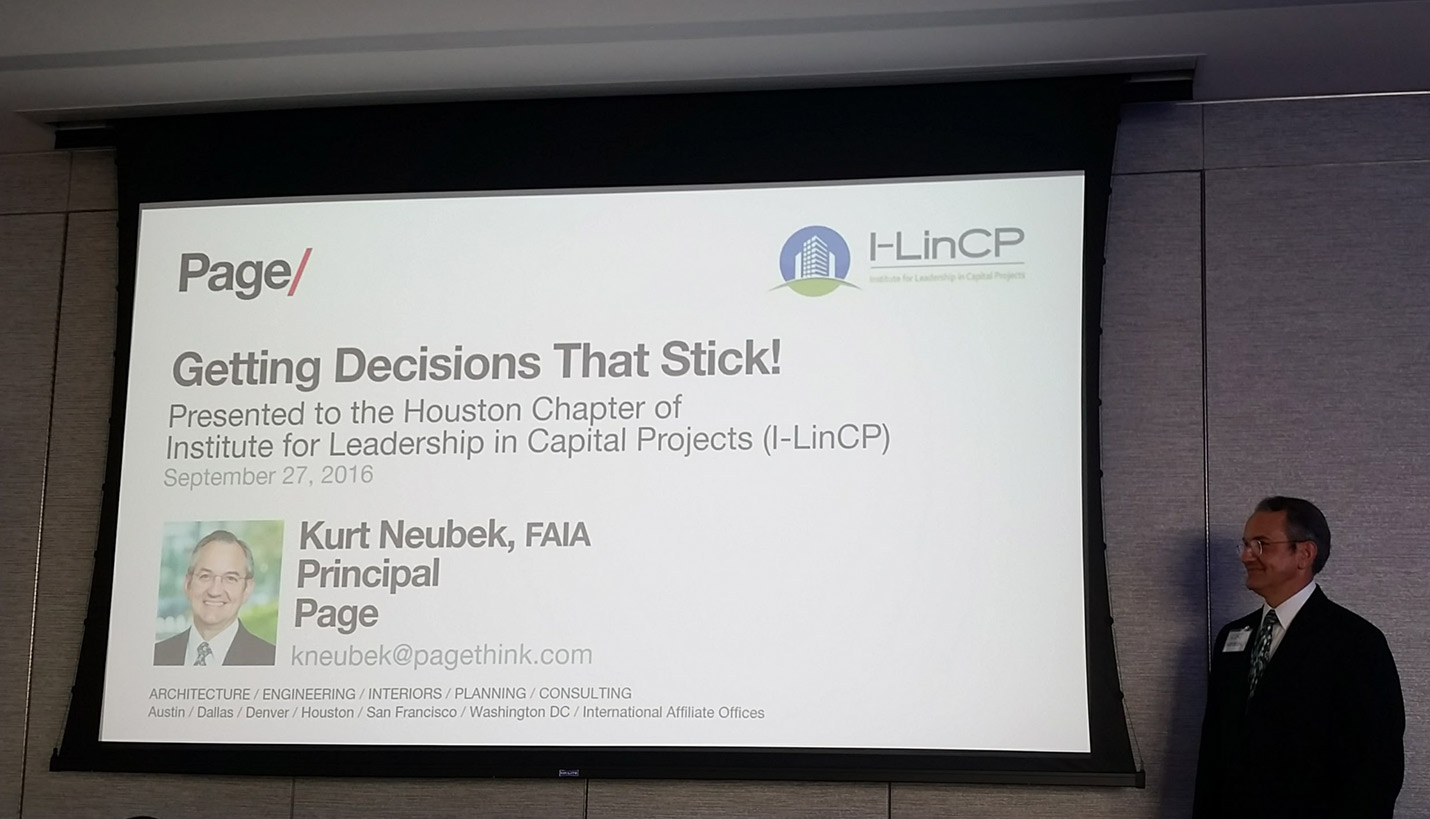Getting Decisions That Stick
Years of architectural practice in the healthcare industry led Kurt Neubek to a “eureka” moment that resulted in a popular presentation he has since given across the US to a variety of audiences in different industries. The spark came from a comment Kurt’s colleagues often made that one of the biggest factors in project delays was when clients almost inevitably changed their minds after the intended schedule for a given decision.
Kurt wanted to know if client changes and subsequent additional services and change orders typically result from a decision maker receiving new information or if “decisions by committee” are second-guessed. Once he began investigating, he realized the challenge posed by changes was actually ubiquitous across companies in every market sector.
He developed recommendations to “get decisions that stick” for both architects and client teams, which typically consist of a project manager, representatives for the owner and decision makers. While his advice is very simple, it is truly helpful to understand the psychology behind them.
Kurt reminds his audiences that everyone has different personality types which influence their decision-making process. Rather than trying to determine and accommodate each one, he recommends focusing on identifying the real decision makers--and who can override them. The sooner those people become involved, the greater the likelihood of decisions that stick.
He also stresses the need for architects and engineers to tell decision makers all the information they need the first time – but no more. The data in Getting Decisions That Stick supports the primary cause of additional services and change orders, which is changes in variables that in turn result in second-guessing among team members. To illustrate, he shows a CAT scan, telling the audience to pretend it’s theirs, then asks what action they’d like the doctor to take. He reminds architects, “Our customers feel this way when we show them design plans and ask for their review and approval – they’re uncertain.”
Thus, Kurt recommends owners leverage their unique role by helping the design team establish a policy that decisions made during the design phase will neither be reviewed nor remanded. He notes, “Decisions are fragile and need to be protected”, recommending that clients understand up front the consequences of changes out of sequence, such as loss of time and additional cost.
To illustrate the challenges of getting a group to make a unanimous decision, Kurt relies on anecdotes and a real-time polling exercise that shows how likely people are to change their minds each time they’re given new information. He shares techniques anyone can use to make more informed and better decisions, and how to break a deadlock.
Audiences have given the presentation rave reviews, with comments such as, “Kurt is a fantastic speaker", “In some ways, each of the points is simple, even obvious. Yet we are not doing them, and many of the points were new to the audience. Kurt has a way of gently reminding us that is both jarring and refreshing.” This was one of the top-rated presentations at the Health Facility Institute Symposium in 2016.
To see where Kurt is scheduled to present, visit Where's Page. To book Kurt as a speaker at an industry organization event, conference or corporate meeting, contact him here.
08/04/2017













